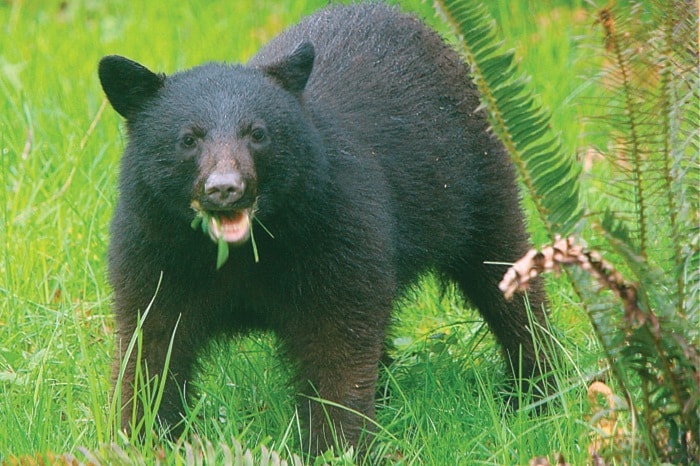If you go out in the woods today, be prepared to see springtime bear activity. Vancouver Island black bears have been out and about, foraging in local forests and even wandering onto rural properties.
Our own Island bruin tends to be larger and blacker than other American black bear subspecies, although actual colouration varies considerably to include brown, cinnamon, blonde or even white.
Black bears arrived on Vancouver Island soon after glaciations, as evidenced by 10,000-year-old skeletons found in caves near Port Hardy. A distinct subspecies, endemic to Vancouver Island, Ursus americanus vancouveri has remained comparatively isolated from mainland black bear populations.
Island black bear numbers – estimated between 7,000 up to 12,000 – are considered one of the densest bear populations in the world, due in large part to abundant vegetation and salmon returning to local rivers to spawn.
They are omnivorous, seeking both plant and animal food, depending on the season. Springtime food includes roots and other succulent vegetation, berries and insects in summer, salmon and seafood in autumn, or as opportunity provides.
Bear sightings are traditionally very low from November until April, according to BC Parks sources.
Encountering a bear in the wild can be an awe-inspiring experience, but remember to maintain a safe distance. Remain in your vehicle – well out of traffic – and keep windows up.
All bears are drawn to human garbage; to avoid bear-human conflict, keep all food remnants, trash and pet food enclosed and out of bruins’ reach.
Report nuisance bears to: 1-877-952-7277.
Learn to prevent and reduce conflict between people and bears online at: www.bearaware.bc.ca.
